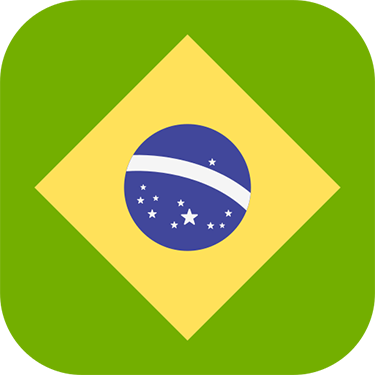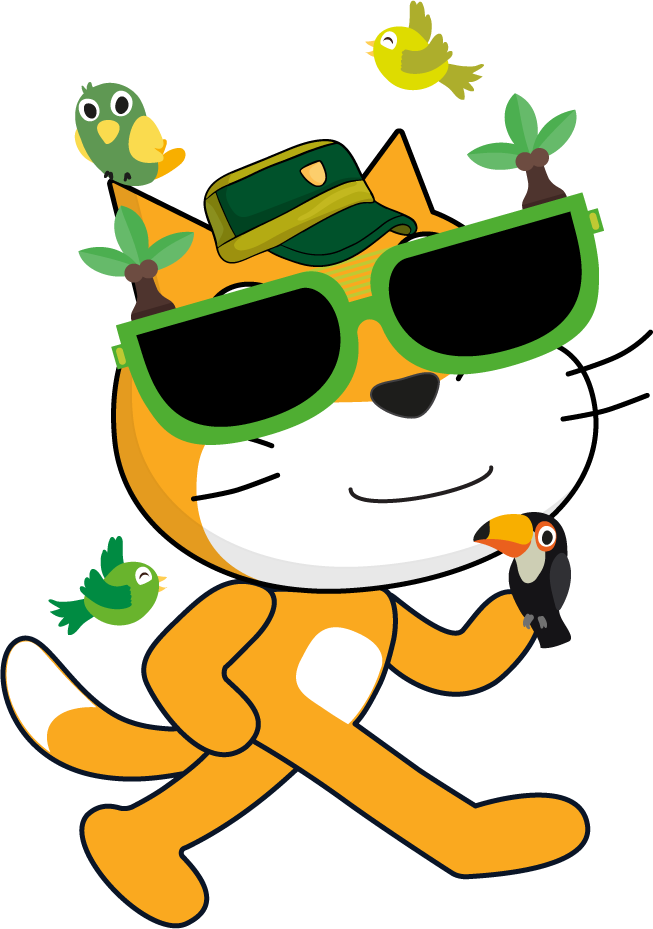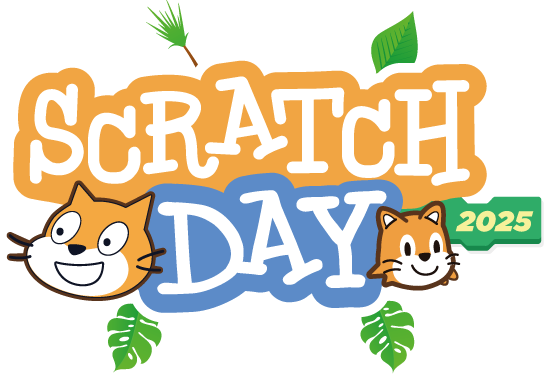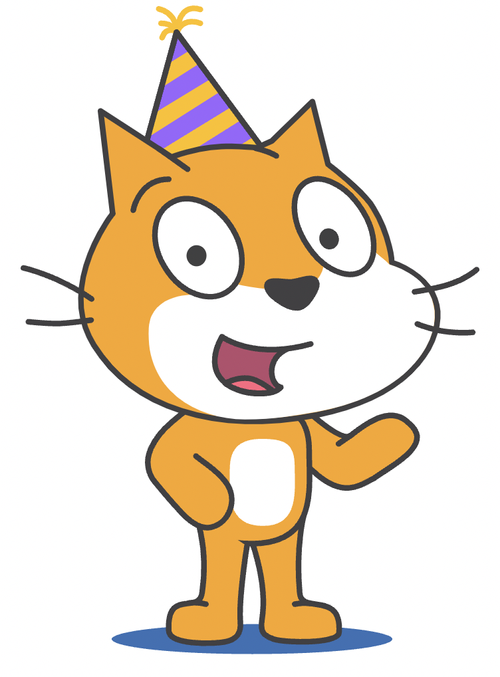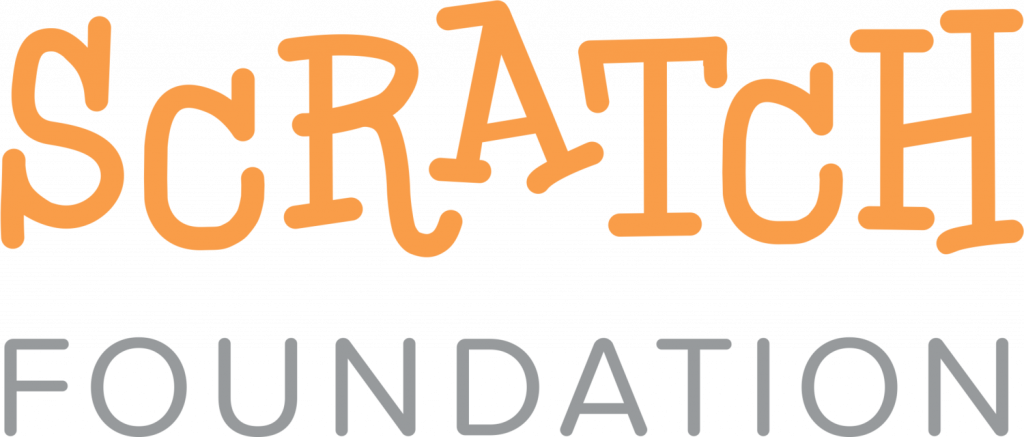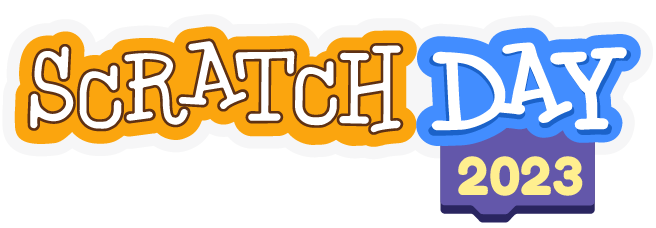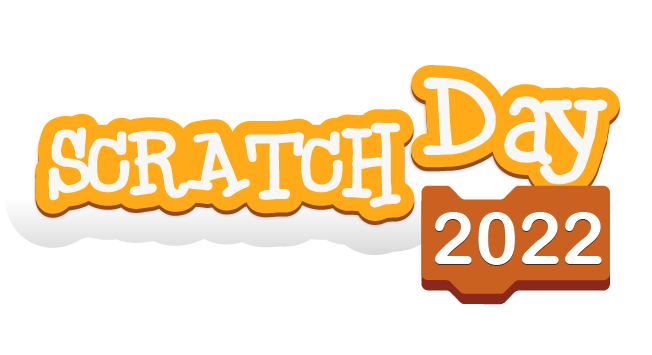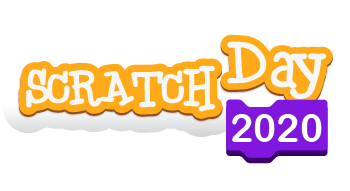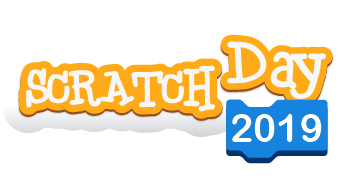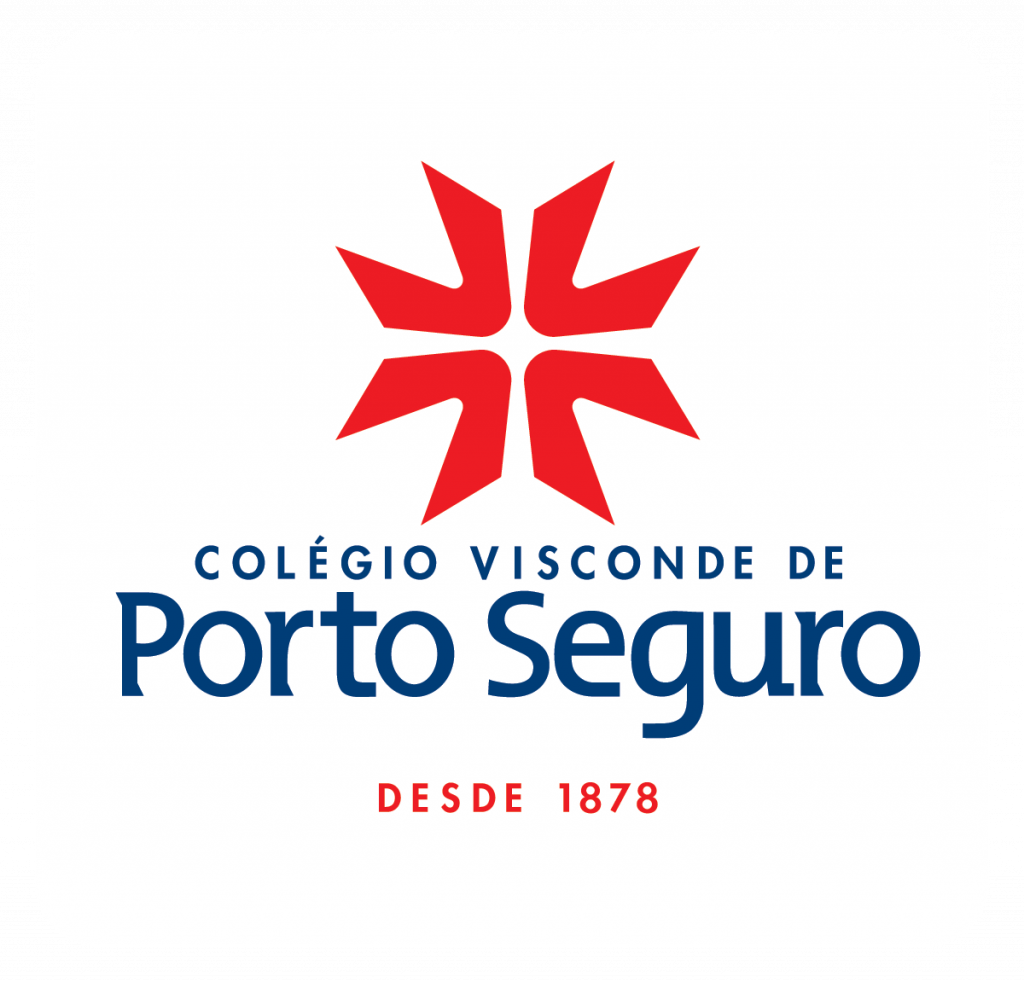In the Colégio Visconde de Porto Seguro, Scratch Day is a special event that connects children, young people, and adults in an inspiring environment where everyone can program, share experiences, and learn collaboratively. This year, we celebrate a very special milestone: we have reached the 11th edition of Scratch Day at our school, a journey that has transformed the way we experience technology and education. Join us and enjoy a day full of innovation, creativity, and discoveries in the world of programming!
Morumbi Campus
May 16 th
From 1:30pm to 6pm
Panamby and Valinhos Campuses
May 09 th
From 1:30pm to 6pm
Vila Andrade Campus
May 17 th
From 8am to 12:30pm
Workshops
Morumbi - Valinhos - Panamby
Vila Andrade
Morumbi - Valinhos - Panamby
Estamos montando os blocos para uma programação incrível.
Em breve, novidades!
Workshops
Scratch Game Racing
- Campuses: Morumbi – Panamby – Valinhos
- 1st and 2nd years
In this fun activity, teams will create navigation patterns for their own participants, as if they were programming robots. In this way, we will explore basic concepts between command and execution. Students will use simple codes that aim to develop logic and problem-solving skills combined with teamwork.
Challenges with ScratchJr
- Campuses: Morumbi – Panamby – Valinhos
- 1st and 2nd years
Students will be invited to explore the world of programming in a creative and playful way through ScratchJr, participating in several themed challenges inspired by the Scratch Day 2025 Campaign: ‘Guardians of Nature’. With interactive activities, children will be able to develop computational skills while reflecting on the importance of environmental preservation, connecting technology, sustainability and meaningful learning.
Scratch Band with Makey Makey
- Campuses: Morumbi – Panamby – Valinhos
- 3rd, 4th and 5th years
In this station, students will create a band using Play-Doh, Makey Makey, and Scratch. They will build musical instruments out of Play-Doh and connect them to Makey Makey, which will send signals to Scratch to produce sounds.
The activity involves creativity, programming, and basic electrical circuits, allowing students to experience music and technology in a fun and interactive way.
First Scratch
- Campuses: Morumbi – Panamby – Valinhos
- 3º, 4º e 5º anos
Students will be given the mission of becoming Guardians of Nature. To do so, they will have to solve three challenges by programming robots using Scratch and LEGO robotics kits.
Challenge 1: Protecting water
Challenge 2: Protecting wildlife
Challenge 3: Combating deforestation
The activity will be developed in teams. Initially, students will analyze the map and define the best strategy to complete the challenges.
The second phase will be dedicated to programming, training, and testing the cart on the carpet.
Click, Code, Create! with Microbit
- Campuses: Morumbi – Panamby – Valinhos
- 3º, 4º e 5º anos
In this activity, students will be challenged to combine artistic creativity and computational thinking by creating an “interactive work of art.” The idea is for students to develop scenarios inspired by nature – such as forests, gardens, oceans, or other environments – in which plants, trees, and animals come to life using the micro:bit integrated with Scratch programming.
The central idea is to transform static visual creations into interactive experiences, in which sensors and buttons on the micro:bit trigger animated reactions and sounds programmed by the students themselves. For example, a movement captured by the micro:bit can make a bird sing, a tree move, or a flower bloom in a scenario programmed in Scratch.
During the activity, students will:
Choose an environmental or ecological theme to represent artistically;
Build or draw their visual elements (on paper, cardboard, or digitally);
Program interactions in Scratch, using the micro:bit as a controller or sensor;
Test their programming and improve interactions based on cause-and-effect logic.
Campeonato de Futebol de Robôs
- Campuses: Morumbi – Panamby – Valinhos
- Ensino Fundamental II
In line with the e-sports movement, we will hold a competition using Scratch in a competition circuit, which will include various experiences and skills: a robotic soccer championship.
The championship finals will be held during the breaks
Sumo Championship
- Campuses: Morumbi – Panamby – Valinhos
- 1ª série – EM
In this workshop, participants will explore the basic principles of robotics and programming through a Sumo Championship using LEGO kits! Teams will be challenged to design, build and program autonomous robots capable of competing in an arena, following the rules of robotic sumo (based on Japan’s national sport). In addition to stimulating logical reasoning and creativity, the workshop promotes teamwork and strategic thinking. The championship finals will be held during breaks.
Interactive Spaces
Criando dobraduras do Scratch
- Campuses: Morumbi – Panamby – Valinhos
This analog activity aims to exercise the basic parameters of computational thinking, such as demonstrating algorithms in practice, through sequences of instructions, as origami allows us to exercise. This practice will be available throughout the event.
Pacman Puzzle
- Campuses: Morumbi – Panamby – Valinhos
Using the laser cutter, a base plate with Pacman-shaped slots will be made. The joystick that will control a Pacman game was programmed in Scratch itself. The idea behind this game is to work on the student’s motor coordination, so that they can make slots quickly and thus win the game. Each slot in the wood will make the virtual Pacman move in a direction (up, down, right and left). This will give us another way to present the different possibilities that Scratch provides through remixing.
This practice will be available throughout the event.
Foot-Mat
- Campuses: Morumbi – Panamby – Valinhos
Students will have an interactive and immersive experience as they explore various games created in Scratch using an innovative tactile mat. Controlled by the Makey Makey board, this resource transforms touches and movements into digital commands, providing a fun and engaging learning experience that stimulates creativity and logical reasoning.
This practice will be available throughout the event.
Musical Mat
- Campuses: Morumbi – Panamby – Valinhos
In this activity, we will explore an interactive activity called Musical Mat. In it, children will be able to experiment in a fun way with how technology and programming work. The mat will have two conductive paths and, when they step on them, children will complete an electrical circuit. While they are holding hands, completing the path, a song programmed in Scratch will play; but, if someone lets go of their hands or leaves the mat, the circuit will be interrupted and the music will stop. This dynamic shows in a playful way how electricity and collaboration can create incredible effects, combining fun and learning!
Kayak Simulator with MakeCode
- Campuses: Morumbi – Panamby – Valinhos
How about having fun while challenging your motor skills?
Try our innovative kayak simulator, where you will paddle using pool noodles! Get ready for an immersive and challenging experience, perfect for testing your coordination and agility in a fun and interactive way.
Whack-a-Mole with Scratch
- Campuses: Morumbi – Panamby – Valinhos
Students will have the opportunity to challenge their reflexes and agility with the classic game of groundhog. The experience will be even more exciting thanks to a custom joystick, designed and developed in our school, which transforms each game into a truly interactive immersion.
Ludoteca Space
- Campuses: Morumbi – Panamby – Valinhos
Students will have the opportunity to participate in fun and interactive moments with three incredible activities: board games, arcade games and Just Dance. These games not only guarantee fun, but also stimulate important skills, such as logical reasoning, teamwork, motor coordination and body expression.
In board games, students will be able to explore classics such as checkers, chess, dominoes and other strategic games, which help develop concentration, decision-making and respect for rules. In addition, group games encourage socialization and collaboration.
In Just Dance, students will move to the rhythm of lively music, following fun choreographies on the screen. This activity promotes motor coordination, physical fitness and relaxation, in addition to being a great way to release energy and have fun with friends.
And to end with even more excitement, the arcade brings classic electronic games, such as racing games, skill challenges and virtual adventures. This activity stimulates reflexes, agility and quick thinking, as well as providing moments of pure fun and nostalgia.
With this combination of board games, Just Dance and arcade, students will have a balanced experience between mental challenges, physical activity and electronic entertainment, ensuring fun, learning and lots of interaction. Get ready to play, dance and have a lot of fun!
Capture the Flag
- Campuses: Morumbi – Panamby – Valinhos
In this activity, students will have the opportunity to explore the world of robotics and programming while having fun playing a classic game! Students will be given a Robot and challenged to program it in Scratch to capture the opposing team’s flag while protecting their own. It’s an exciting combination of strategy, programming, and teamwork with lots of collaboration and sharing of ideas. So, get ready for an exciting journey of technological exploration and teamwork. The adventure is about to begin!
Scratch Crowns
- Campuses: Morumbi – Panamby – Valinhos
In this activity, students will put their creativity to use by creating their own kitty headbands! Using simple materials, they will be able to customize the accessories in a fun way. In addition to stimulating artistic expression, this activity reinforces creativity, encouraging students’ imagination and protagonism in a playful and interactive environment.
Micro:bit Football
- Campuses: Morumbi – Panamby – Valinhos
In this activity, students will explore the concepts of programming, sensors and computational logic through a classic game: table football! The idea is to modernize this traditional game by integrating the Micro:bit Futbool, which will automatically record goals and update the game score in real time.
Each team will set up their table football field, with goalkeepers adapted to detect when the ball goes in. Using sensors connected to the micro:bit (such as touch or proximity sensors), the system will recognize when a goal is scored and, through programming in MakeCode, will display the score directly on the micro:bit’s LED display.
Sphero Combat
- Campuses: Morumbi – Panamby – Valinhos
An arena with obstacles and a maze will be made available to participants to interact with Sphero via iPad. The idea of this activity is for students to have contact with a block programming language and a digital resource used in our Digital Literacy classes.
Vila Andrade
Estamos montando os blocos para uma programação incrível.
Em breve, novidades!
Workshops para Pais
Scratch 3.0 Fábrica de jogos para Pais
- Campus: Morumbi
- Pais e responsáveis
- das 10h30 às 11h30
Nesta oficina apresentaremos jogos e atividades da plataforma Scratch para serem remixados e produzidos pelas famílias.
Workshops
Scratch Game Racing
- Campus: Vila Andrade
- 1st year
In this fun activity, teams will create navigation patterns for their own participants, as if they were programming robots. In this way, we will explore basic concepts between command and execution. The students will work with simple codes designed to develop logic and problem-solving skills, combined with teamwork.
Animating with Scratch Jr
- Campus: Vila Andrade
- 2nd year
The students will be invited to explore the world of programming in a creative and playful way through ScratchJr, participating in various themed challenges inspired by the Scratch Day 2025 campaign: ‘Guardians of Nature.’ With interactive activities, children will develop computational skills while reflecting on the importance of environmental preservation, connecting technology, sustainability, and meaningful learning.
Scratch Band with Makey makey
- Campus: Vila Andrade
- 3rd year
In this station, students will create a band using modeling clay, Makey Makey, and Scratch. They will build musical instruments with clay and connect them to the Makey Makey, which will send signals to Scratch to produce sounds.
The activity involves creativity, programming, and basic electrical circuits, allowing students to experience music and technology in a playful and interactive way.
FIRST SCRATCH (Arena and Mat)
- Campus: Vila Andrade
- 4th year
The students will be tasked with becoming the Guardians of Nature. To do so, they will need to solve three challenges through robot programming using Scratch and LEGO robotics kits.
Challenge 1: Water Protection
Challenge 2: Wildlife Protection
Challenge 3: Combating Deforestation
The activity will be developed in teams. In the first stage, students will analyze the map and define the best strategy to tackle the challenges.
The second stage will be dedicated to programming, practicing, and testing the robot on the mat.
Click, Code, Create! Micro:bit
- Campus: Vila Andrade
- 5th year
In this activity, students will be challenged to combine artistic creativity and computational thinking by creating an “interactive artwork.” The proposal is for students to develop nature-inspired scenes – such as forests, gardens, oceans, or other environments – in which plants, trees, and animals come to life using the micro:bit integrated with Scratch programming.
The central idea is to transform static visual creations into interactive experiences, where micro:bit sensors and buttons trigger animated reactions and sounds programmed by the students themselves. For example, a movement detected by the micro:bit could make a bird sing, a tree move, or a flower bloom in a Scratch-programmed scene.
During the activity, students will:
Choose an environmental or ecological theme to represent artistically;
Build or draw their visual elements (on paper, cardboard, or digitally);
Program interactions in Scratch using the micro:bit as a controller or sensor;
Test their programs and enhance the interactions based on cause-and-effect logic.
Robot Soccer Championship
- Campus: Vila Andrade
- Lower Secondary Education
Contextualized with the e-sports movement, we will hold a competition in this space using Scratch in a competitive circuit, where various experiences and skills will be showcased: a robotic football championship. The finals of the championship will take place during the breaks.
These activities will take place in the Digital Literacy classes.
Sumo Championship
- Campus: Vila Andrade
- High School
In this workshop, participants will explore the basic principles of robotics and programming through a Sumo Championship using LEGO kits! Teams will be challenged to design, build, and program autonomous robots capable of competing in an arena, following the rules of robotic sumo (based on the traditional Japanese sport). In addition to stimulating logical thinking and creativity, the workshop promotes teamwork and strategic thinking. The finals of the championship will take place during the breaks.
These activities will take place in the Digital Literacy classes.
Workshops para Pais
Scratch 3.0 Fábrica de jogos para Pais
- Campus: Morumbi
- Pais e responsáveis
- das 10h30 às 11h30
Nesta oficina apresentaremos jogos e atividades da plataforma Scratch para serem remixados e produzidos pelas famílias.
Interactive spaces
Creating Scratch Foldings
- Campus: Vila Andrade
This analog activity aims to exercise the basic parameters of computational thinking, such as demonstrating algorithms in practice through sequences of instructions, as folding activities allow us to practice.
This practice will be available throughout the event.
Scratch Crowns
- Campus: Vila Andrade
In this activity, students will put their creativity into practice by creating their own cat ears headbands! Using simple materials, they will be able to personalize the accessories in a fun way. In addition to stimulating artistic expression, this activity reinforces creativity, encouraging students’ imagination and protagonism in a playful and interactive environment.
Foot-Mat
- Campus: Vila Andrade
Students will have an interactive and immersive experience exploring various games created in Scratch through an innovative tactile mat. Controlled by the Makey Makey board, this resource transforms touches and movements into digital commands, providing a playful and engaging learning experience that stimulates creativity and logical thinking.
This activity will be available throughout the event.
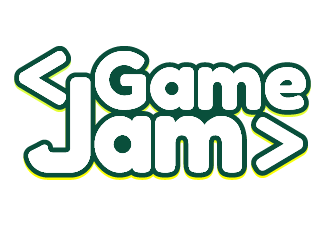
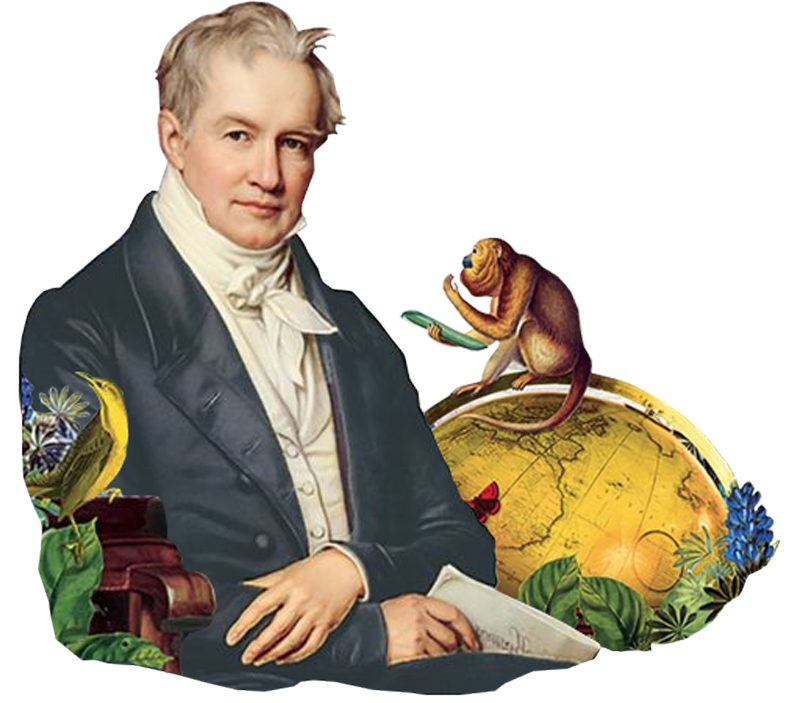
- As maravilhosas viagens de Arabella e Irani
- Das 8h30 às 13h
- No campus Panamby
Alexander von Humboldt foi um naturalista, geógrafo, explorador e cientista alemão do século XIX. Ele é amplamente considerado um dos fundadores da geografia moderna e um dos mais importantes cientistas da história natural de seu tempo. Humboldt nasceu em 1769 em Berlim, na Alemanha, e estudou em várias universidades europeias, incluindo as de Frankfurt e Göttingen.
Em um divertido intercâmbio criativo, os alunos dos cursos Hack Gaming e Kids Tube se articularão em uma proposta que requer muitas trocas de conhecimento por meio de pesquisas, entrevistas, programação e design de jogos. Venha participar da IV edição do Game Jam Panamby criando jogos a partir de um desafio inspirado na exposição do Instituto Martius-Staden que será revelado no dia do evento. Todos podem participar!


